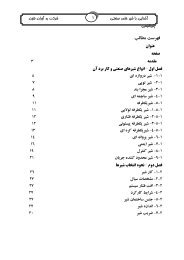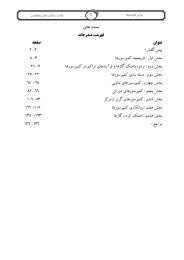Chapter 11 FUNDAMENTALS OF THERMAL RADIATION
Chapter 11 FUNDAMENTALS OF THERMAL RADIATION
Chapter 11 FUNDAMENTALS OF THERMAL RADIATION
You also want an ePaper? Increase the reach of your titles
YUMPU automatically turns print PDFs into web optimized ePapers that Google loves.
<strong>Chapter</strong> <strong>11</strong> Fundamentals of Thermal Radiation<strong>11</strong>-45 The variations of emissivity of two surfaces are given. The average emissivity, absorptivity, andreflectivity of each surface are to be determined at the given temperature.Analysis For the first surface:1T ( 3 m)(3000 K) = 9000 mK f 0890029 .1The average emissivity of this surface is(T) 1 f (1 f (0.2)(0.890029) (0.9)(1 0.890029) 0.281 21)The absorptivity and reflectivity are determined from Kirchhoff’s law 0.28(at 3000K) 1 1 10.28 0.72For the second surface:1T ( 3 m)(3000 K) = 9000 mK f 0890029 .The average emissivity of this surface is1 0.80.230.90.1, mThen,(T) 1 f (1 f (0.8)(0.890029) (0.1)(1 0.890029) 0.72 1 20.721 1 1 10.72 0.28)(at 3000K)Discussion The second surface is more suitable to serve as a solar absorber since its absorptivity for shortwavelength radiation (typical of radiation emitted by a high-temperature source such as the sun) is high,and its emissivity for long wavelength radiation (typical of emitted radiation from the absorber plate) islow.<strong>11</strong>-21













